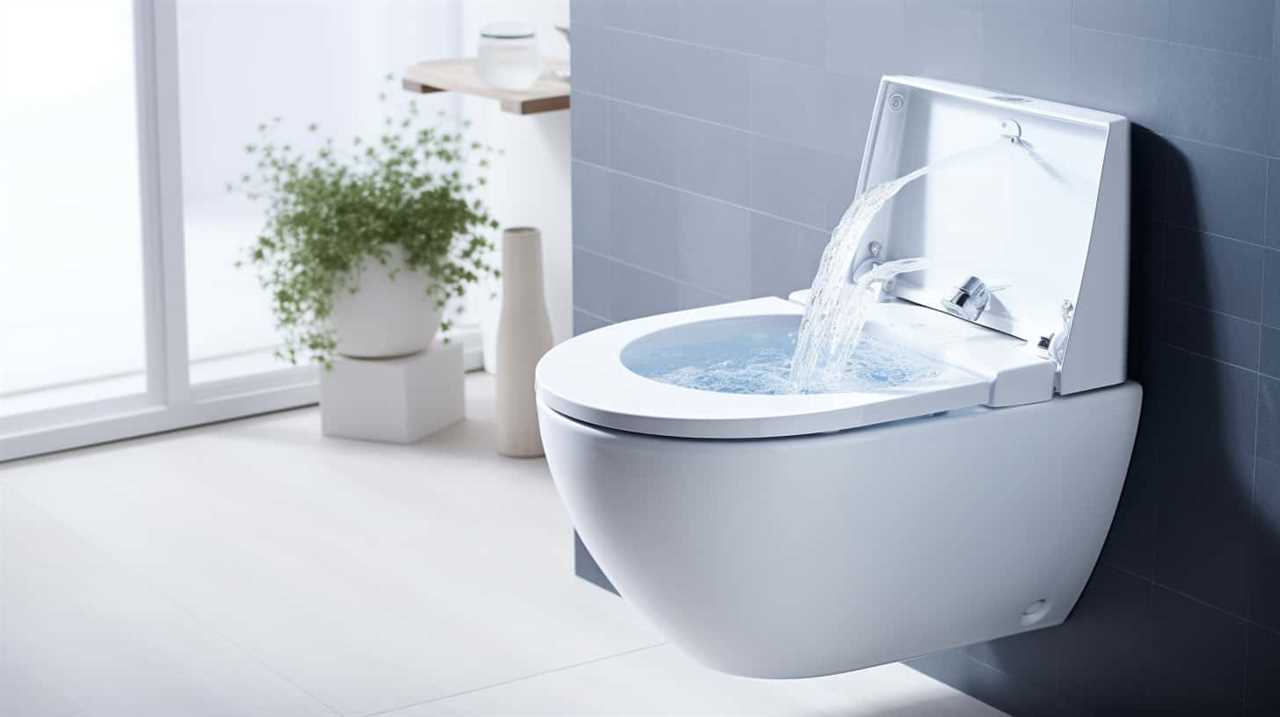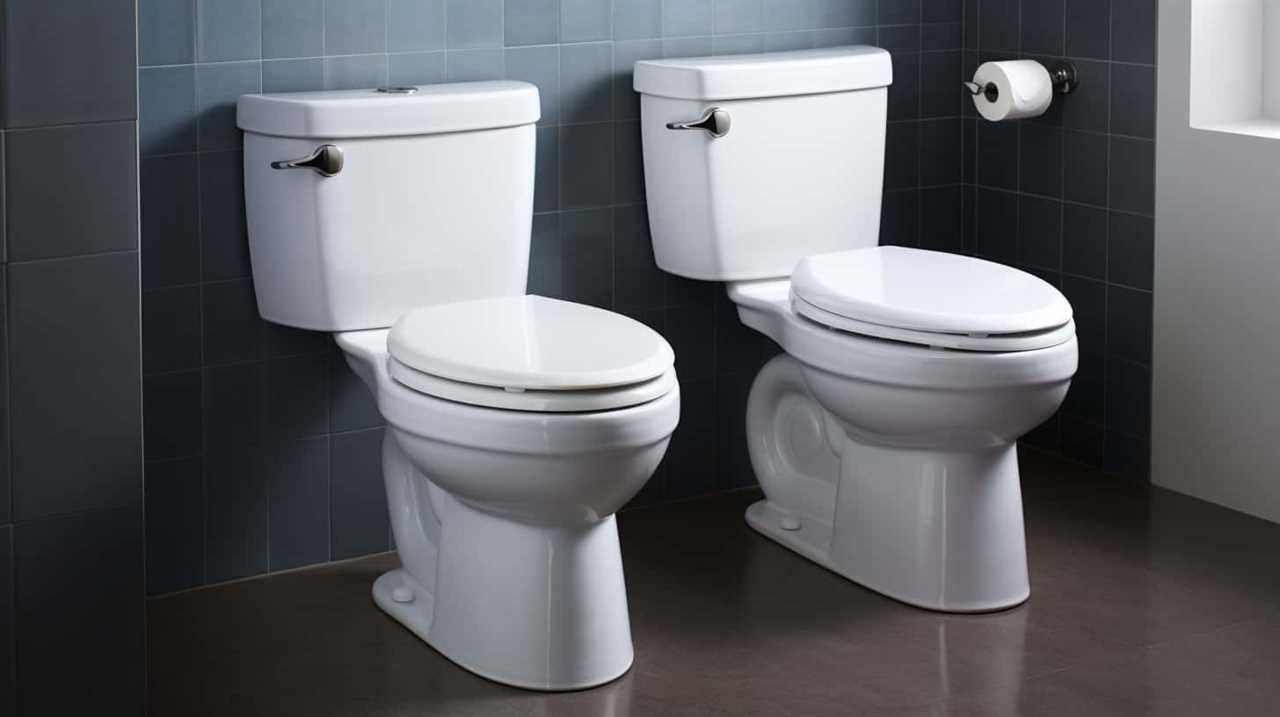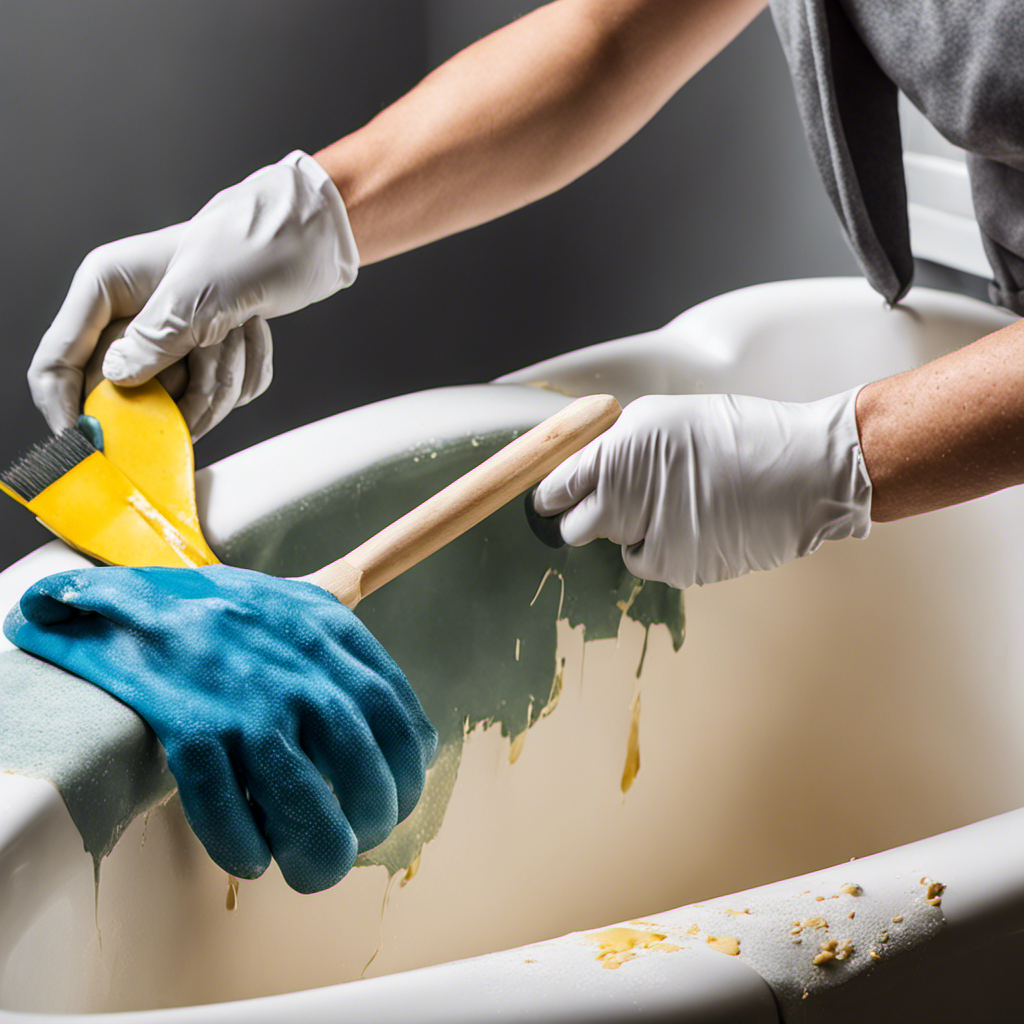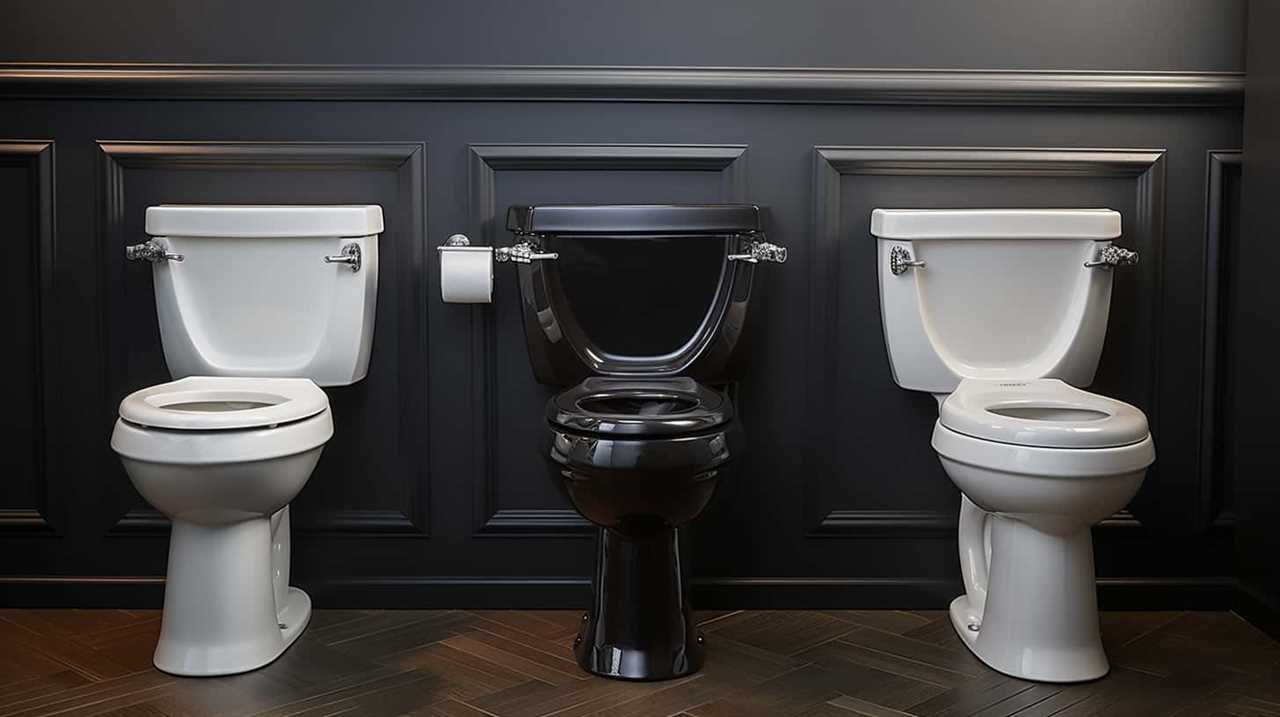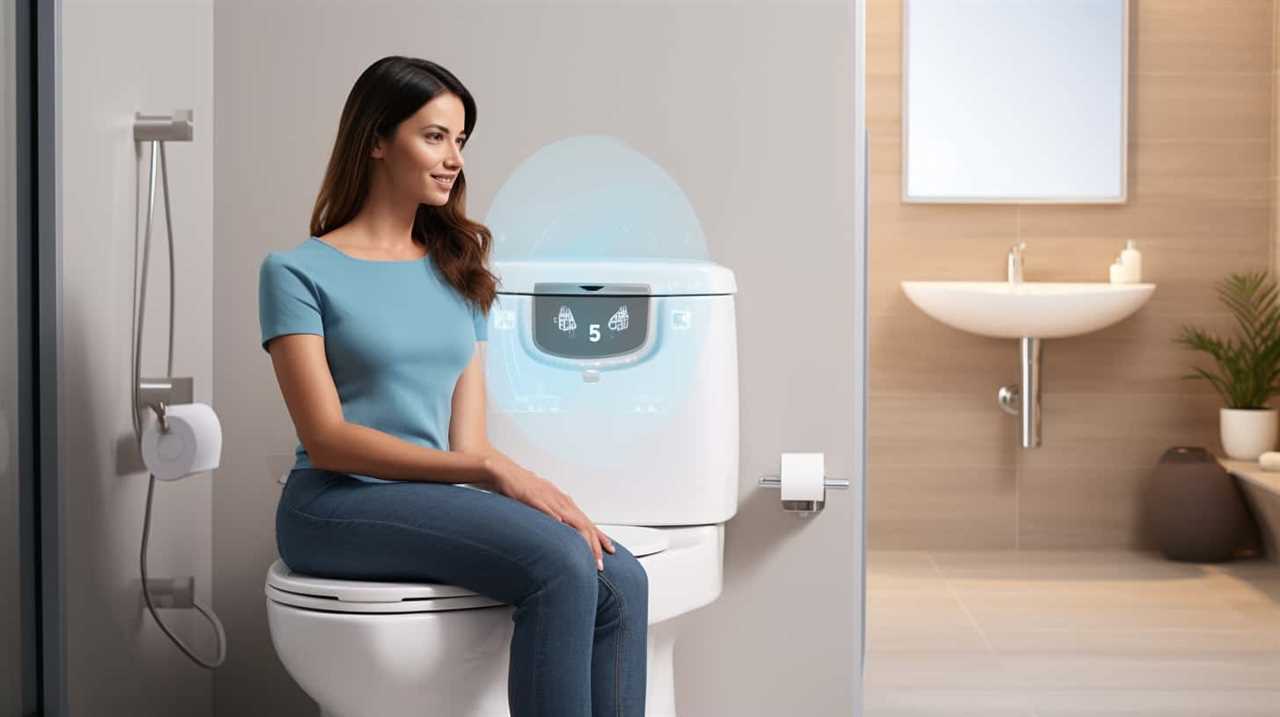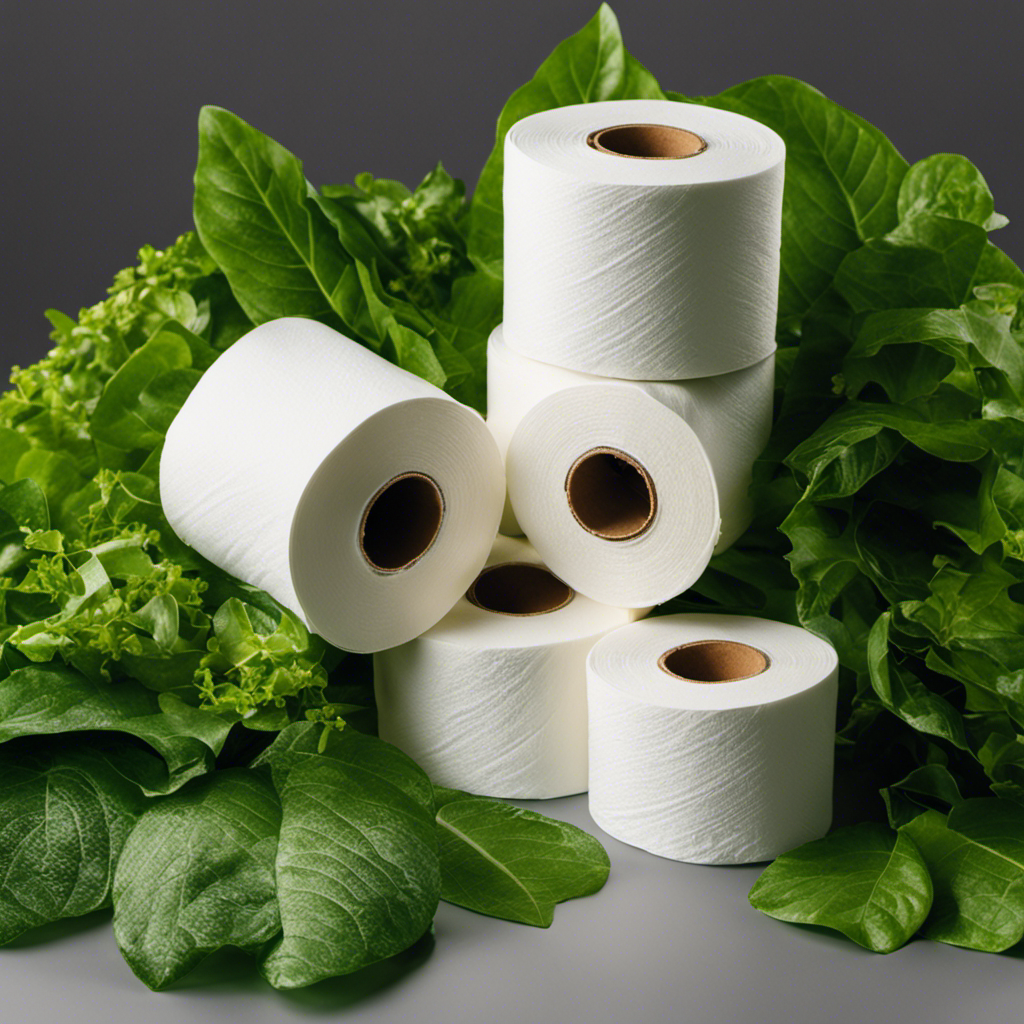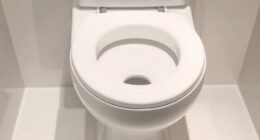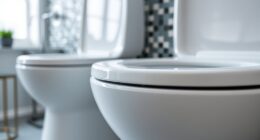Can we flush a toilet without running water? Yes, we can!
In this article, we will explore the various methods and techniques that allow us to maintain proper sanitation even when faced with water scarcity or emergencies.
From understanding gravity-assisted flushing to utilizing manual flushing with a bucket, we will delve into alternative options such as composting toilets and chemical toilet solutions.
Join us as we discover the mastery of preserving hygiene when water is limited.
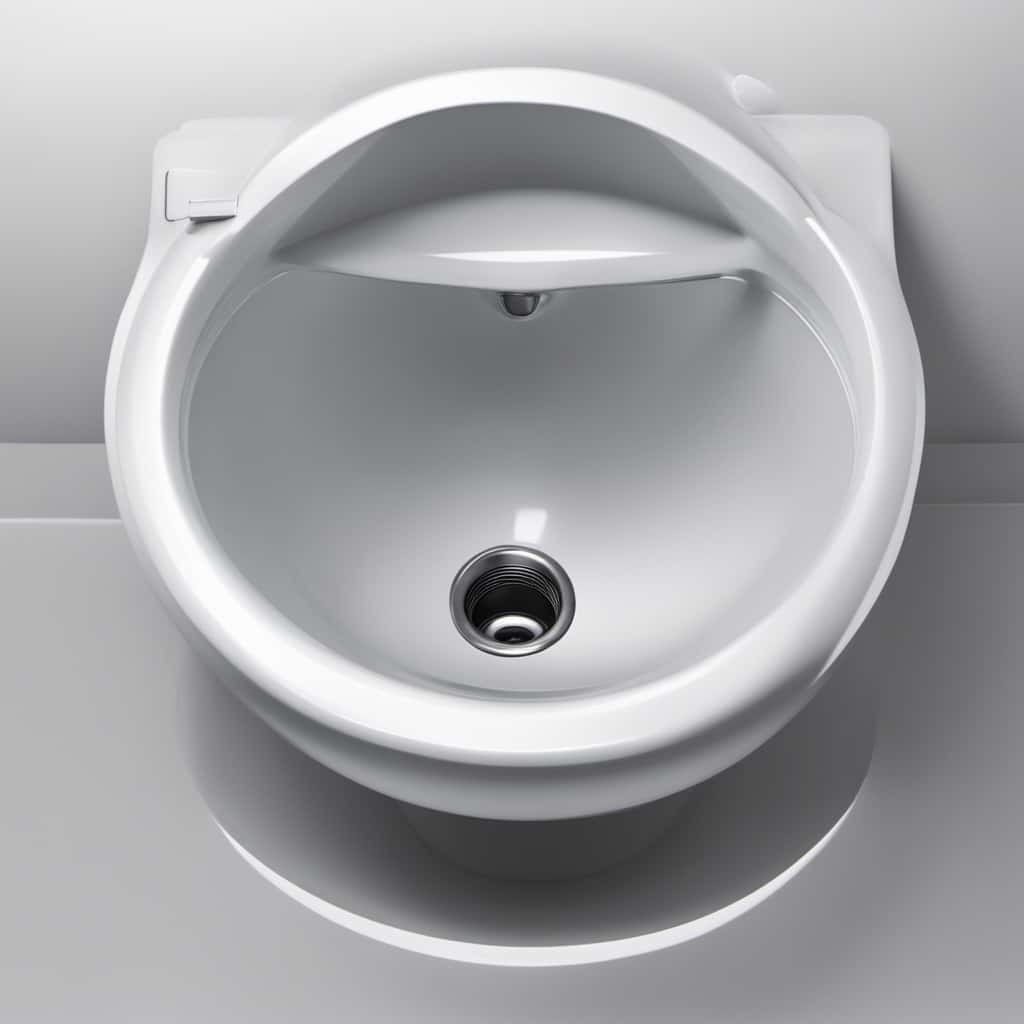
Key Takeaways
- Water is essential for removing waste and maintaining cleanliness in toilets.
- Traditional toilets use a significant amount of water per flush, while newer models and dual-flush toilets are designed to be more water-efficient.
- Gravity-assisted flushing relies on the force of gravity to remove waste from the toilet bowl and is simpler and less prone to mechanical failures compared to pressure assist toilets.
- In situations where running water is not available, manual flushing with a bucket of water or using alternative options like composting toilets or chemical toilet solutions can be effective.
The Importance of Water in Toilet Flushing
We understand the importance of water in toilet flushing. Water conservation is crucial, especially considering the impact of water scarcity on sanitation.
When we flush a toilet, water is used to remove waste and maintain cleanliness. The amount of water required for each flush can vary depending on the type of toilet and its efficiency. Traditional toilets typically use around 1.6 to 3.5 gallons of water per flush, while newer models are designed to use less water, typically around 1.28 gallons.
Water conservation efforts have led to the development of dual-flush toilets, which allow users to choose between a full flush or a reduced flush, saving even more water.
Proper maintenance, such as fixing leaks or using water-saving devices, can further reduce water usage, promoting sustainability and addressing the challenges of water scarcity.
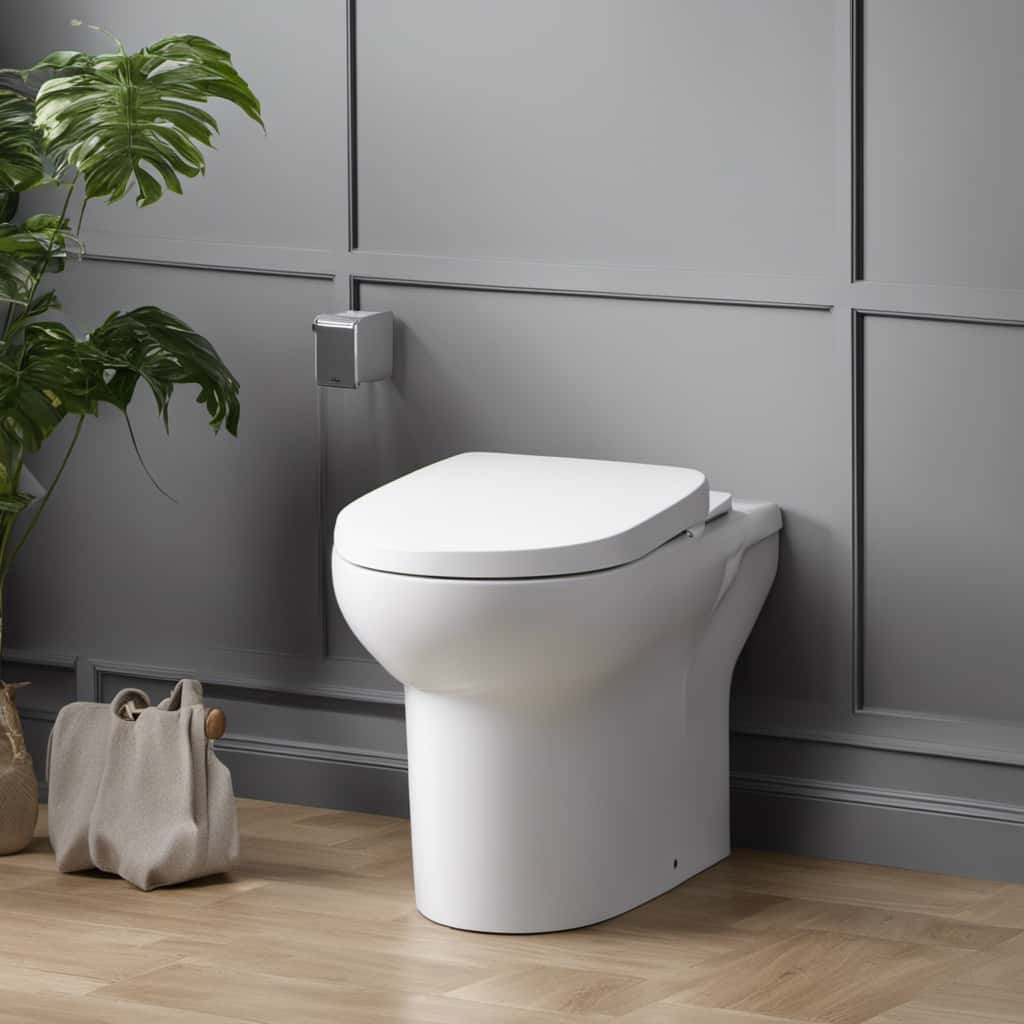
Understanding Gravity-Assisted Flushing
To continue our discussion on the importance of water in toilet flushing, let’s delve into the concept of gravity-assisted flushing.
Understanding siphon action is key to comprehending how gravity flush toilets work. When the toilet is flushed, water flows from the tank into the bowl, creating a siphon. As the water level in the bowl rises, it pushes the waste down the drain, aided by the force of gravity. The siphon action ensures that the waste is effectively removed from the bowl.
Gravity flush toilets rely solely on the force of gravity to remove waste, making them simpler and less prone to mechanical failures compared to pressure assist toilets.
Now, let’s explore an alternative method of flushing a toilet without running water: using a bucket.
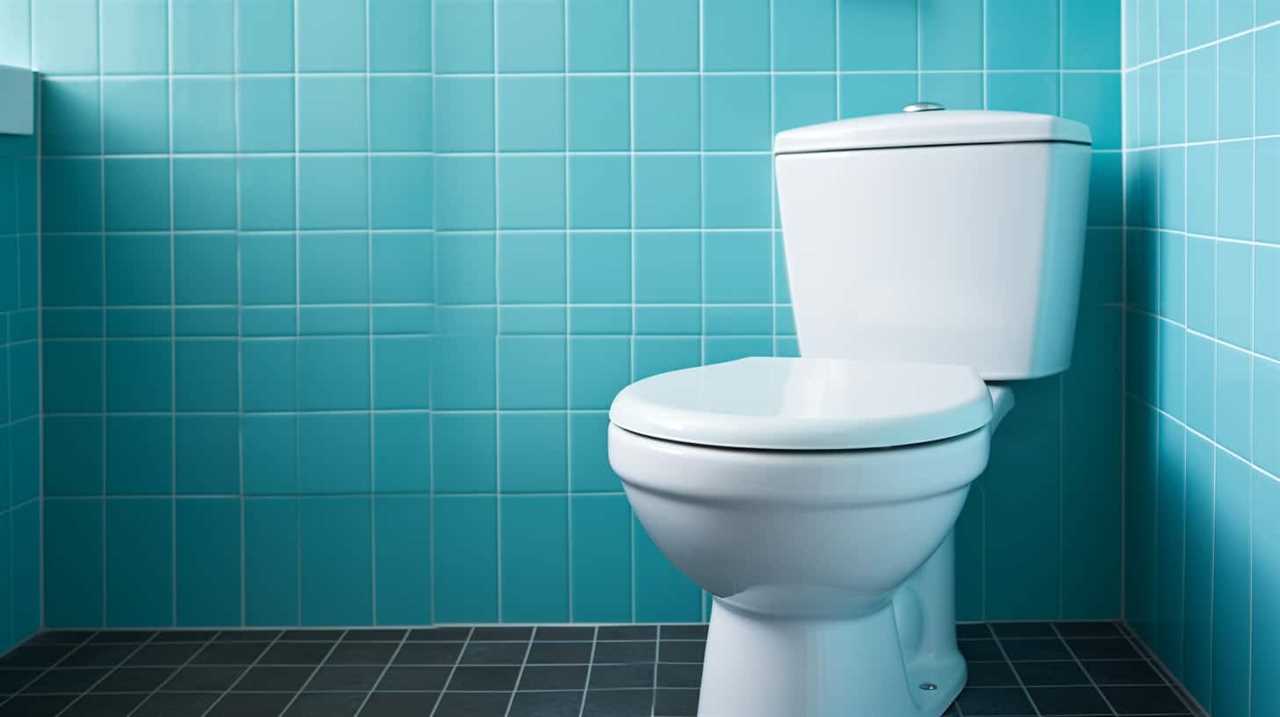
Using a Bucket for Manual Flushing
To manually flush a toilet without running water, all you need is a bucket. It’s a simple and effective method for conserving water in situations where there is a shortage or a need to reduce consumption. By using a bucket, you can manually pour water into the toilet bowl to create enough force to flush away waste. Here is a table that outlines the steps for bucket flushing:
| Step | Description |
|---|---|
| 1 | Fill the bucket with water |
| 2 | Lift the toilet seat and lid |
| 3 | Pour the water into the toilet bowl |
| 4 | Repeat if necessary |
| 5 | Close the toilet seat and lid |
Bucket flushing is a practical solution that can be easily implemented in water conservation efforts. It allows individuals to maintain hygiene while minimizing water usage.
Exploring Composting Toilets as an Alternative
An effective alternative for flushing a toilet without running water is to explore the use of composting toilets. Composting toilets are eco-friendly options that offer several benefits. Here are four reasons why composting toilets are a great alternative:
- Composting benefits: Composting toilets convert human waste into nutrient-rich compost, which can be used as fertilizer for plants. This helps reduce waste and contributes to sustainable agriculture.
- Water conservation: Composting toilets eliminate the need for water flushing, saving significant amounts of water in the process. This is especially beneficial in areas facing water scarcity or during droughts.
- Off-grid capability: Composting toilets can be used in remote areas or off-grid locations where access to water and sewage systems is limited. They provide a self-contained waste management solution.
- Odor control: Composting toilets are designed to effectively manage and control odors through proper ventilation and decomposition processes.
By exploring composting toilets as an alternative, we can embrace eco-friendly options that not only conserve water but also contribute to sustainable waste management practices.
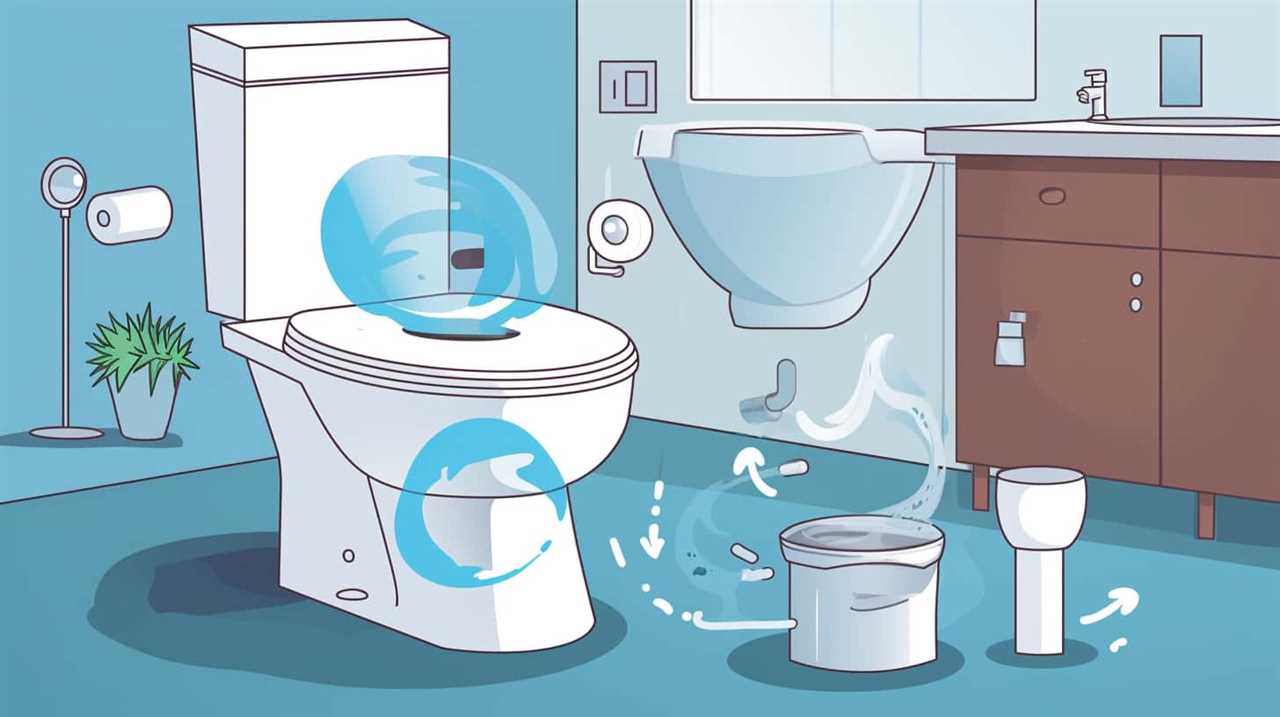
However, in emergency situations or when a composting toilet isn’t available, there are other options to consider, such as chemical toilet solutions.
Emergency Options: Chemical Toilet Solutions
In emergency situations, we can rely on chemical toilet solutions as an alternative to flushing a toilet without running water. When faced with a lack of water supply, chemical toilet solutions can provide a convenient and sanitary option for waste disposal.
These solutions are often found in emergency supplies or portable restrooms, making them easily accessible during times of crisis. Chemical toilet solutions typically contain chemicals that break down waste and suppress odors, ensuring a more pleasant experience.
These solutions are designed to be used in conjunction with portable toilets or makeshift toilet facilities, allowing for proper waste management in emergency situations. By utilizing chemical toilet solutions, individuals can maintain hygiene standards and minimize the spread of diseases, even without access to running water.
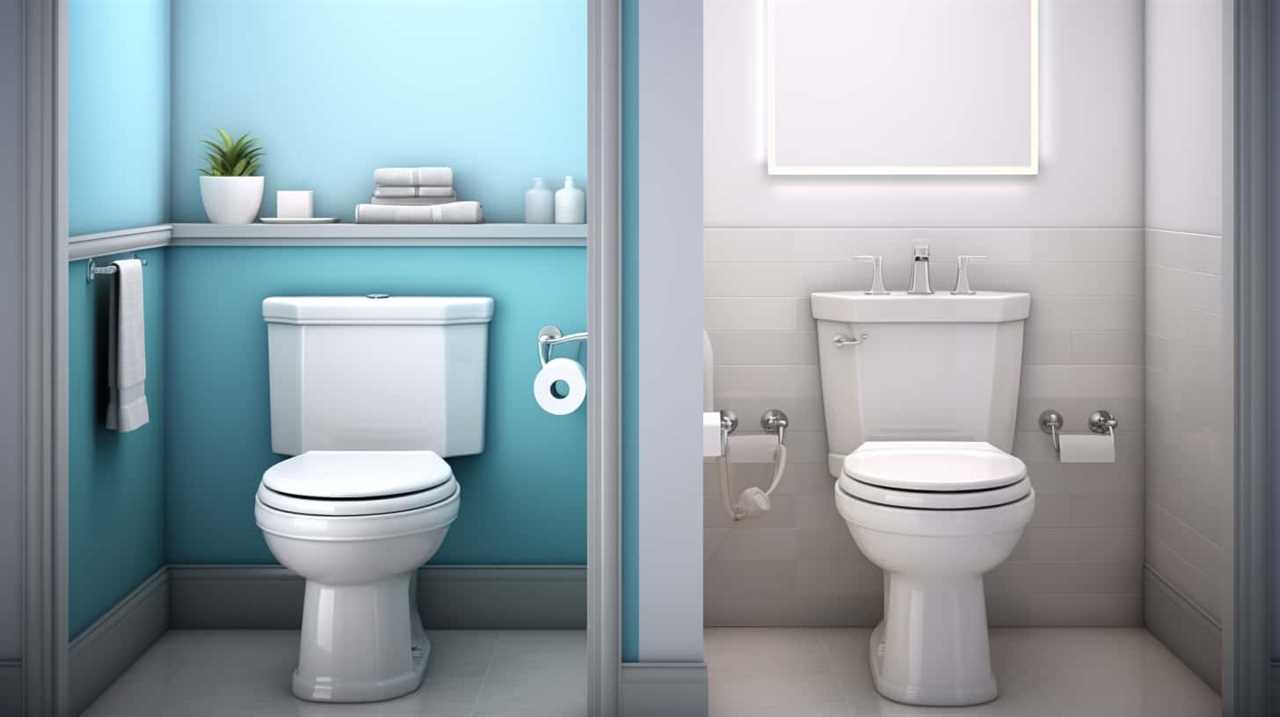
Frequently Asked Questions
How Does a Gravity-Assisted Flushing Mechanism Work?
Gravity-assisted flushing mechanisms use the weight of water to create a powerful flush. The force of gravity pulls water from the tank into the bowl, pushing waste down the drain. These mechanisms are commonly found in water-saving toilets.
Can a Composting Toilet Be Used in Any Type of Household?
Yes, a composting toilet can be installed in any household. It requires proper installation and regular maintenance for waterless operation. This type of toilet offers an eco-friendly solution for waste management.
Are Chemical Toilet Solutions Safe to Use in Emergency Situations?
Chemical toilet solutions can be effective in emergency situations, but alternatives like composting toilets are safer during water shortages. Using chemical solutions may harm the environment and require proper disposal.
What Are the Benefits of Using a Bucket for Manual Flushing?
The benefits of using a bucket for manual flushing include conserving water, reducing reliance on running water, and being able to flush even in emergency situations. However, it requires manual effort and may not be as sanitary as a traditional flush.
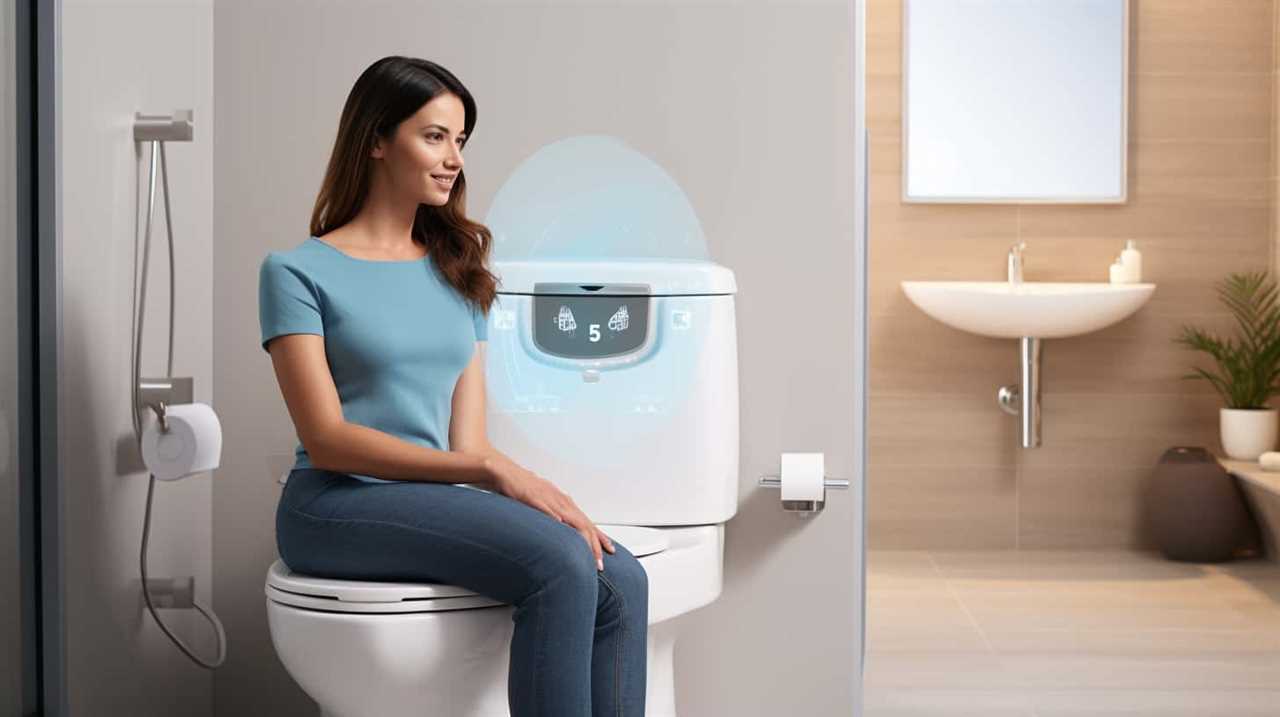
Can Waterless Toilets Be Installed in Existing Bathrooms?
Yes, waterless toilets can be installed in existing bathrooms. The installation process involves connecting the toilet to a waste management system, eliminating the need for running water. This is a cost-effective and environmentally friendly option.
Conclusion
In conclusion, while it may be possible to flush a toilet without running water, it’s certainly not the ideal or sanitary solution.
From understanding the importance of water in flushing to exploring alternative options like composting toilets, it’s clear that water plays a crucial role in maintaining proper hygiene.
So, unless you want to embrace a ‘unique’ and odorous experience, it’s best to stick to the good old reliable plumbing system.
